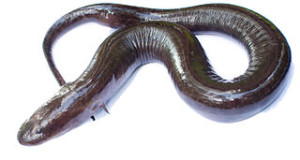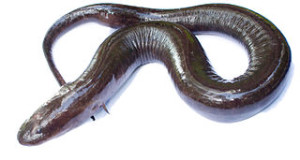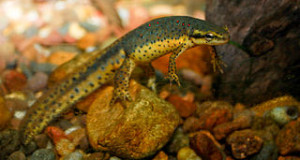 Relatively scarce in the pet trade when I first began in the field (admittedly quite awhile ago!), interest in the Mexican axolotl has exploded in recent years, and today it is arguably the most commonly-kept salamander in the USA. Its popularity has soared in other countries as well, and oddly enough, it has become somewhat of a pop culture figure in Japan.
Relatively scarce in the pet trade when I first began in the field (admittedly quite awhile ago!), interest in the Mexican axolotl has exploded in recent years, and today it is arguably the most commonly-kept salamander in the USA. Its popularity has soared in other countries as well, and oddly enough, it has become somewhat of a pop culture figure in Japan.
The Mexican axolotl has the rare distinction of being simultaneously one of the world’s most highly endangered amphibians (in the wild) and a common pet and laboratory subject.
Please note: the aquatic larvae of all species of salamanders are termed “axolotls” in some references, i.e. as in “tiger salamander axolotls”. The name as used here refers to young and adult Ambystoma mexicanum only.
Classification
Class: Amphibia
Order: Caudata
Family: Ambystomatidae
A complex of a dozen or more related aquatic salamanders dwell in mountainous lakes in the vicinity of this species’ range. The waters inhabited by one of these, the Lake Patzucuaro salamander (A. dumrelii), are high in dissolved salts. Perhaps as an adaptation to its brackish environment, this salamander sheds its outer skin layer continuously throughout its life.
The family Ambystomatidae, limited to North America, contains approximately 40 terrestrial and aquatic members, including such well known species as the tiger salamander (A. tigrinum), marbled salamander (A. opacum), spotted salamander (A. maculatum) and Pacific giant salamander (Dicamptodon ensatus).
Physical Description
The Mexican axolotl is stoutly built and reaches 9-12 inches in length. The head bears large, bushy red gills and the laterally compressed tail is equipped with a swimming fin. Wild specimens are dark brown in color; albino, leucistic, black and piebald strains are common in laboratories and the pet trade.
Range
This species’ entire natural range is limited to an area of 6.2 square miles in size. It is native only to Lakes Chalco and Xochimilco, adjacent to the southern edge of Mexico City, in central Mexico.
It appears now to survive only in a small fragment of that tiny habitat – the southern remnants of Lake Xochimilco, and perhaps within associated canals and private garden ponds.
Habitat
The Mexican axolotl is entirely aquatic. The high-altitude lakes it inhabits are deep, heavily-vegetated, mud-bottomed and cool in temperature. Axolotls can extract oxygen from air or water, utilizing gills, lungs and skin.
Status in the Wild
This salamander is extremely rare in the wild, and is considered to be among the world’s most endangered amphibians. Recent surveys in its tiny natural range have turned up only 0-42 specimens, despite 1,800 net casts.
Lake Chalco has been largely drained, and no axolotls survive there. Lake Xochimilco has been severely polluted and impacted by flood control measures, and is extensively channelized to accommodate “floating gardens” of flowers and vegetables.
Protected by the Mexican government and listed on Appendix 2 of CITES, Mexican axolotls are none-the-less still collected for the food and medicinal trade, and are also threatened by large populations of introduced fish (Tilapia and carp).
Click: The Natural History and Captive Care of the Mexican Axolotl: Part 2, To read the 2nd half of this article.
 That Reptile Blog – Reptile, Amphibian and Exotic Pet Care and Information
That Reptile Blog – Reptile, Amphibian and Exotic Pet Care and Information




I am trying to decide on getting a new pet! I am considering getting a Savanah monitor, mangrove monitor, or another lizard. What do you think?
Hello,
Frank Indiviglio here. Thanks for your interest in our blog.
Please let me know a bit more about what type of enclosure you have available…both species you mention get quite large and need a great deal of room. As for other lizards, please let me know your interests…i.e. an animal that is handleable, one that might breed, or live in groups in a planted terrarium, etc. and I’ll be happy to make some recommendations.
Best regards, Frank Indiviglio
i have 2 axolotls (mexican wlaking fish) and i woke up dismorning with what im sure of is egg i was wondering what is the caring for eggs and the hatchlings
Hello, Frank Indiviglio here. Thanks for your interest in our blog.
I apologize for being so long in responding. The delay was caused by a technical difficulty which has now been resolved.
Congratulations on the eggs…raising the young takes a bit of work, but is a very interesting undertaking. I’ve recently written an article on Caring for Axolotl Eggs…please check it out and be sure to write back with any questions.
Good luck, enjoy and please keep me posted,
Best regards, Frank Indiviglio.
ive got two axos who eat eachother. i feed them heeps but they still eat eachother
Hello Tyron, Frank Indiviglio here. Thanks for your interest in our blog. I apologize for the long delay in responding to you…an emergency surgery put me out of commission for a time.
Mexican axolotls are notoriously aggressive towards one another. Often it is not a matter of hunger but rather of establishing dominance. However, injuries are most likely to occur during feeding time, especially if live food is used. Splitting them at this time, or providing a larger aquarium, may help.
You can also ease tensions by providing them with additional shelters and sight barriers in the form of caves, driftwood and artificial plants…fill the tank with as much “obstructive material” as possible. If this does not help, your only option would be to separate them.
Although axolotls usually heal well from even significant injuries, and will re-grow toes, tails, gills and, possibly, entire limbs, on-going attacks will wear down their immune systems over time. Each time you notice an injury, add Stress Coat to the aquarium as per the recommendations for fish. This will assist healing, but is not a permanent solution.
Good luck and please keep me posted.
Best regards, Frank Indiviglio.
here is a question my next door neibours axolotle is yellow in colour but a few days ago it got a black blotch on its forhead and now there is a large black one on its back as well what is this and if its some sort of sickness can i cure it some how
Hello Jake, Frank Indiviglio here.
Thanks for your interest in our blog.
Interesting question. The pet trade had their origin in lab colonies which were maintained mainly for genetics research. Over 50 pigmentation mutations have been induced in axolotls, and a number occur naturally. Consequently, they do not seem to follow the “normal genetics” rules that we may be familiar with. I’ve had dark larvae hatch from eggs laid by leucistic parents, only to have them turn white later in life…the black patches you describe have also been recorded as developing on adults (happens in albino alligators also, for some reason). I do not completely understand the process, and it varies even within animals from the same clutch, but usually is benign.
Certain fungi appear as dark patches, but these are usually raised a bit from the skin, appear “fuzzy” and are grey or white as opposed to black.
Good luck and please keep me posted.
Best regards, Frank Indiviglio.
Hello Frank!
This is Mikhail from Leningrsd zoo. We talk about breeding pipa pipa last year.
i lost your old site. seems like this nice too!
glad to see you!
Hello Mikhail, Frank Indiviglio here.
Nice to hear from you, thanks for writing in. You’re at the right site, this is where we corresponded last time. Please let me know what you are up to at the zoo whenyou have a moment,
Best regards, Frank Indiviglio.
Strange. I went fishing down by Branson Missouri at a place the locals call K Dock while there my cousins son caught one of these. He stated that previously several days I believe before that he caught a larger one. My cousin went to take it off the hook and it bit her. Luckily it does not have any teeth. BUT she did do a rather entertaining lil dance.
Hello Janelle, Frank Indiviglio here.
Thanks for your interest in our blog. Very interesting – axolotls are limited in distribution to 1-2 lakes in Mexico – unless someone released their pets, and they managed to survive, the creature was more likely a Mudpuppy, which is native to your area and known to take fishing baits. Please check out this photo of a Mudpuppy and let me know if perhaps this is the animal involved.
Good luck and please keep me posted.
Best regards, Frank Indiviglio.
Im sorry it was one of the cream colored ones with the pinkish/red frills.
Hello Janelle
Thanks ..mudpuppies are usually fairly dark, but can be cream-colored (although this is rare); Usually there is some mottling; the body shape in flatter and more elongated than is the axolotls, and they grow much larger (axolotls top out at 10 inches or so).
Good luck and please keep me posted.
Best regards, Frank Indiviglio.
Nope thats not what it looked like. It was the creamy white with the red/pink frills. 3 on each side of the head. The first one they caught was roughly 10-12 inches and the second one was roughly 8 inches.
Hello Janelle, Frank Indiviglio here.
Thanks for writing back; that really is quite amazing. If they are indeed axolotls, I believe it would be the first known introduction outside their home range. Especially surprising as they are defenseless against fish, albinos in particular are beacons for predators. Could I prevail upon you to take a photo next time?..this is definitely worth following up on,
Good luck and please keep me posted.
Best regards, Frank Indiviglio.
I would love to the only problem is I was only there on a visit. I live in Germany and my cousin has since moved from there. One of the salamanders may not have survived as it swallowed the fishing hood and it was all the way back in behind the gill. There was no way to get it out without killing it on the spot. I do know that they were sticking pretty close to the shallow area.
Hello Janelle, Frank Indiviglio here.
Thanks…seems you’ve had an experience that herpetologists living here would love to repeat! I’ll keep the locale in my notes and will check if I have any useful contacts in the area. Be sure to bring a rod and camera when you return, you and yours seem to have a knack!
Good luck with all,
Best regards, Frank Indiviglio
Heading that way again in July maybe i can find a way to do it without a actual hook though. They seem to really like the worms.
Hello Janelle,
Pulling a seine net through the shallows, especially in weedy areas, is a great, safe way to catch salamanders and other interesting creatures.
Good luck, have a safe trip and please keep me posted.
Best regards, Frank Indiviglio.